
Table of Contents
Scientific Classification
- Kingdom: Animalia
- Phylum: Chordata
- Class: Reptilia
- Order: Squamata
- Family: Dactyloidae
- Genus: Anolis
- Species: Anolis sagrei
Quick Overview
The Brown Anole (Anolis sagrei) is a small and fascinating lizard species known for its adaptability and distinct features. These lizards have become widespread in various parts of the world, attracting attention for their unique behaviors and territorial displays.
Fast Facts
- Scientific Name: Anolis sagrei
- Lifespan: Typically 3-5 years in the wild, but they may live longer in captivity.
- Average Size: Adult Brown Anoles usually range from 5 to 8 inches in length.
- Diet: Insectivorous, primarily feeding on small insects and invertebrates.
- Habitat: Highly adaptable, found in a wide range of environments, from urban areas to forests.
Did you know?
The Brown Anole is often nicknamed the “Bahamian Anole” due to its native range in the Bahamas.
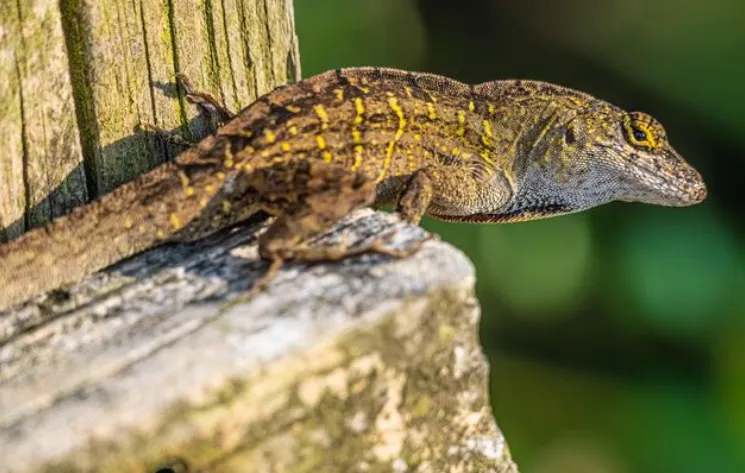
Appearance
Brown Anoles are relatively small lizards with slender bodies and a pointed snout. Their coloration varies, but they often have a brownish hue, with the ability to change their color to some extent based on their environment and mood. Males sometimes exhibit a pinkish throat fan, or dewlap, which they use for territorial displays.
Size and Weight
Adult Brown Anoles typically measure between 5 to 8 inches in length, including their tails. They are relatively lightweight, with males generally being slightly larger and heavier than females.
Temperament and Behavior
These lizards are known for their active and territorial behavior. Males may exhibit aggressive displays toward one another, including dewlap extensions and head-bobbing. They are excellent climbers, often seen perching on plants, walls, or fences. Brown Anoles are also capable of shedding and regenerating their tails.
Fun Fact
Brown Anoles have an expandable dewlap, a colorful throat fan that they use for communication and territory defense. They can extend this dewlap to display a larger and more colorful area when needed.
Habitat and Distribution
Brown Anoles are highly adaptable and can be found in a variety of habitats. Their native range includes the Bahamas and nearby regions, but they have been introduced to various parts of the world, including Florida, Hawaii, and other subtropical and tropical areas.
Care Guide
For those interested in keeping Brown Anoles as pets:
- Habitat: Provide an enclosure with plants, branches, and climbing opportunities to replicate their natural habitat.
- Temperature: Maintain a temperature gradient within the enclosure, with a basking spot around 85-90°F (29-32°C) and cooler areas around 70-75°F (21-24°C).
- Humidity: Keep the humidity level around 60-70% to support their shedding and overall health.
- Diet: Feed them a diet primarily consisting of small insects, such as crickets and small mealworms.
- Health Check-ups: Regularly monitor your pet’s health and behavior, and provide a veterinarian specializing in reptiles if needed.
Diet and Nutrition
In the wild, Brown Anoles primarily feed on small insects and invertebrates. When kept as pets, they should be offered a diet consisting of appropriately-sized feeder insects. Dusting their
Health and Wellness
Maintaining suitable temperature, humidity, and providing proper nutrition are crucial for the well-being of Brown Anoles. Regular health check-ups and observation of their behavior will help ensure they remain healthy in captivity.
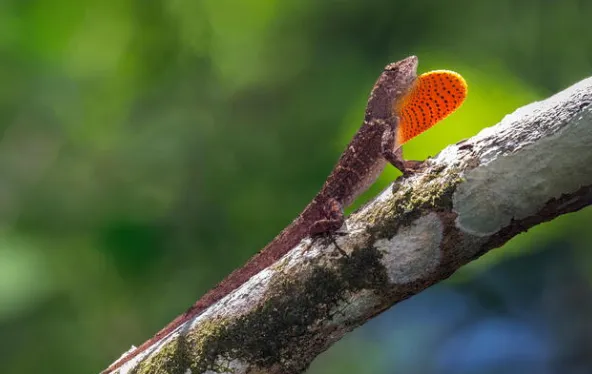
Reproduction
Brown Anoles reproduce by laying eggs, which are deposited in concealed locations. In captivity, if housing multiple individuals, it’s essential to provide ample hiding spots to prevent stress or aggressive behavior among tank mates.
Conservation Status
The Brown Anole is not considered an endangered species. However, in some regions where they have been introduced, their presence can have ecological impacts. Populations outside their native range may impact local ecosystems and displace native lizard species.
Photo Gallery

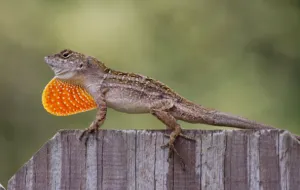
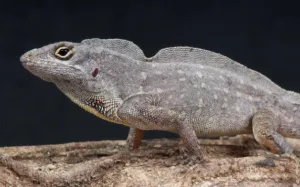
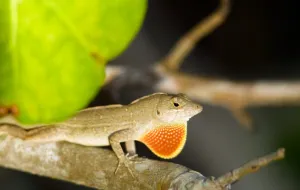
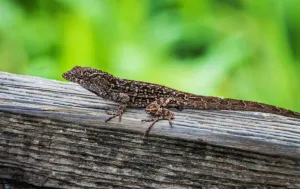
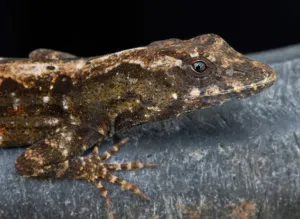
Related Profiles
Share This Profile
3 Amazing Facts About Brown Anoles
- They Can Climb Vertical Surfaces: Brown Anoles are exceptional climbers. Their toes have adhesive pads that allow them to grip onto vertical surfaces and even move upside down, making them adept at navigating a variety of terrains.
- The Dewlap Colors Can Vary: While male Brown Anoles typically have a pink or reddish dewlap, the color can vary depending on the individual and its mood. It can range from light pink to bright red or orange. The dewlap is not only for display but also plays a role in thermoregulation and communication.
- They Can Change Color: Brown Anoles have the ability to change their coloration, albeit to a limited extent. They can darken or lighten their skin to better blend into their surroundings or to communicate with other lizards. The color change is influenced by factors such as temperature, mood, and environmental conditions.
- Enchi Ball Python: A Unique and Stunning Morph of Python regius - March 27, 2025
- Emerald Tree Monitor: The Enigmatic Green Guardian of the Rainforest - March 26, 2025
- The Egyptian Cobra (Naja haje): A Fascinating Serpent - March 25, 2025
